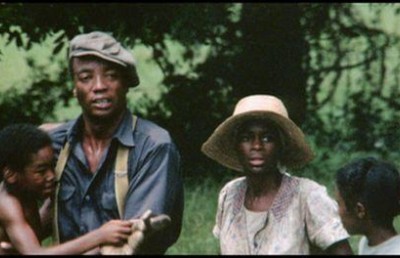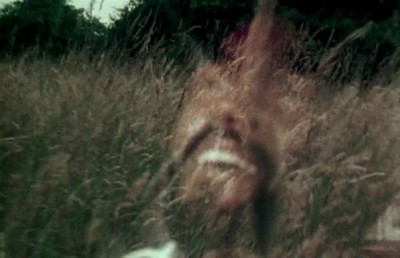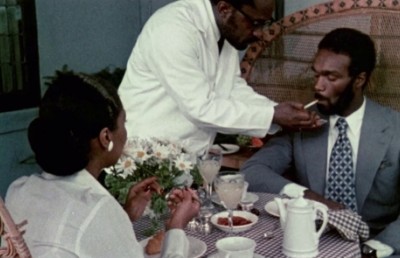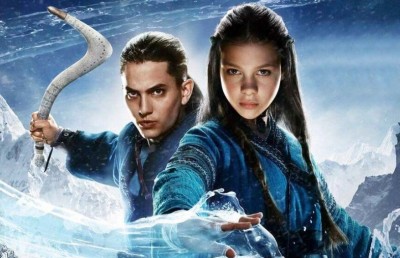Humanity’s Children: Charles Dickens, James Baldwin, Boyhood, and Moonlight
Are categories such as majority and minority art arbitrary?
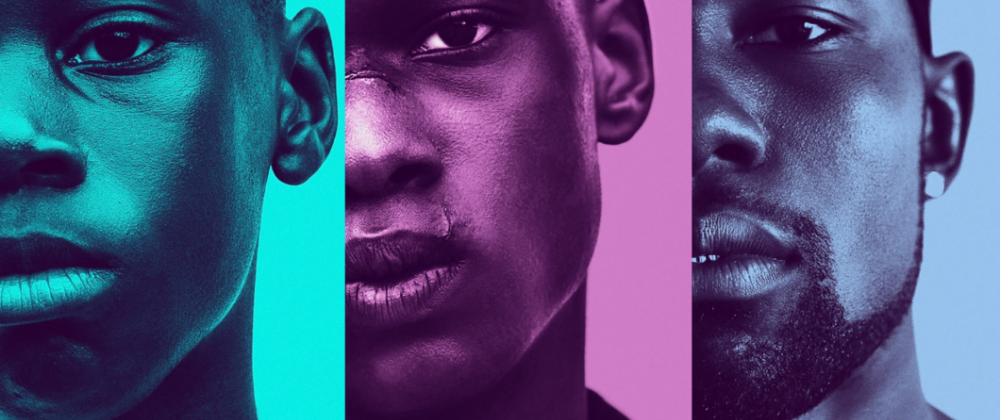
“We need to think of imagination not as the faculty that produces visual or auditory images but as a combination of novelty and luck. To be imaginative, as opposed to being merely fantastical, is to do something new and to be lucky enough to have that novelty be adopted by one’s fellow humans, incorporated into their social practices.”
—Richard Rorty, Philosophy as Poetry
Charles Dickens was an artist, an entertainer, and a social critic; and in his stories and books he portrayed youth in all its courage, compassion, and cunning, resources that were necessary in the challenging world in which boys and girls found themselves. Charles Dickens created portraits that allowed people to actually see the dynamics of the society in which they lived, in all its frustrated promise, its ironies, its tragedies. Of how many writers can that be said—of Jane Austen, Honore de Balzac, George Eliot, and Victor Hugo, of Dostoevsky and Tolstoy, of Mark Twain and Henry James, of Ernest Hemingway and William Faulkner and John Steinbeck, of Saul Bellow and Ralph Ellison and Philip Roth and Toni Morrison? Charles Dickens imagined the intelligence and impulses of the human being in struggle with the confinements of society, suggesting how variables—chance and hard work, friendship and love, laziness and greed—affect destiny; and Dickens articulated his vision in metaphor, parable, ritual, and the tallest of tales, featuring dramatic gestures and devastating consequences. Perhaps, that explains the great appeal Dickens has had for film artists. There have been, for instance, several screen versions of his novel Great Expectations (1861), virtually one for every generation: in Great Expectations, a boy, Pip, growing up in harsh circumstances, is kind to a desperate man and is taken up by a high-born woman, the maddened spinster Miss Havisham, with a pretty but spoiled ward, Estella, before the boy is given a gift to help him make his way in the world. The story is one of faith and fortune but also of self-deception and vanity (the attitudes and emotions of its people are quite recognizable, though belief, love, and pride have turned some of the characters into fools and monsters). The once jilted Miss Havisham is usually seen wearing her wedding dress, a sign of the most significant and terrible event of her life; and she vows revenge on men. Pip expects confirmation of something more from her, wanting a prestigious recognition of his value from the heights—but what he gets is gratitude for his own charity from the depths. While watching some of the films and television programs inspired by Dickens—particularly, Great Expectations (David Lean, 1946) and David Copperfield (George Cukor, 1935)—I have thought anew about the imperative of such a mission as that of Charles Dickens.
The Londoner Charles Dickens (1812 – 1870), born in Portsmouth, was the author of The Pickwick Papers (1837), Nicholas Nickleby (1838), Oliver Twist (1839), The Old Curiosity Shop (1841), David Copperfield (1850), Bleak House (1853), Little Dorrit (1857), A Tale of Two Cities (1859), Great Expectations (1861), and Our Mutual Friend (1865), the books often published in installments during a year or two. Charles Dickens was the son of a civil servant who spent time in debtors’ prison, interrupting his son’s schooling, and sending Charles to work early in a blacking (shoe polish) factory; and, later, Charles worked in a law office, and in journalism, with the childhood impoverishment and stress haunting the man’s memory, and informing some of his strongest writing. The inimitable Charles Dickens wrote for poetry, profession, public, and profit about admirable and despicable personalities, about the mistreatment of children and the poor, about impossible bureaucracies and convoluted laws; and Dickens seems singular in his ability to create characters, situations, and symbols that speak to us beyond reason and expectations. A periodicals editor, and writer of travel books, lecturer, theatre manager, philanthropist, as well as fiction writer, Charles Dickens has been and remains among the most popular of writers.
Yet, Dickens is not the only name that is likely to come to mind when one thinks of the role of a great writer: Balzac, Dostoevsky, Tolstoy, James, and Proust are among the other illustrious names of those who created literary art with social vision. Honore de Balzac (1799 – 1850), born in Tours and educated in Vendome, studied law in Paris, was the author of books exploring the range of French life and society, in the city and the provinces, public and private, encompassing about one hundred novels and stories, including the French Revolution story about royalists, Les Chouans (1829), and Colonel Chabert (1832), Eugene Grandet (1833), Pere Goriot (1834), and Cousin Bette (1946), the latter about love, betrayal, and vengeance, made into a 1998 dark comedy film starring Jessica Lange. Honore de Balzac, the companion to Evelina Hanska, a Polish countess, is often pictured in his dressing gown, drinking coffee; and Balzac created portraits of drive and passion, of competition and conflict. The malice and greed can be scalding. “The multiple truths about a people are revealed by that people’s artists—that is what the artists are for. Whoever, for example, attempts to understand the French will be forced, sooner or later, to read Balzac. And Balzac himself, in his own personality, illustrates all those vices, conundrums, delusions, ambitions, joys, all that recklessness, caution, patience, cunning, and revenge which activate his people. For, of course, he is those people; being French, like them, they operate as his mirror and he operates as theirs,” asserted James Baldwin, the twentieth-century American writer of fiction and essays (“As Much Truth As One Can Bear,” The Cross of Redemption, edited by Randall Kenan, Pantheon, 2010; pages 30 and 31).
The Moscow-born Fedor (1821 – 1881), whose name is spelled Dostoyevsky and Dostoevsky alternately, was educated as an engineer in military school in St. Petersburg, worked for a time in government, before creating literature such as Poor Folk (1846) and The Double (1846). A socialist, he was arrested, tried, and sentenced to death but received a reprieve—and instead of death was given prison time and military service, during which he became religious. He took the human spirit and the social order as his subjects in works of thought and torment. Dostoevsky, an editor of literary reviews, a gambler, and an adulterer who would nurse his dying wife before marrying another, wrote Memoirs from the House of the Dead (1861), The Insulted and the Injured (1862), Notes from the Underground (1864), Crime and Punishment (1866), The Idiot (1868), The Possessed (1871), and The Brothers Karamazov (1880). Dostoevsky’s oeuvre would be key to understanding much of the world that was born after him, its tormented spirit, its convulsive politics, and its ordinary doubt and funk and jab, as James Baldwin noted for an assembly gathered to discuss art and culture: “When I was very young (and I am sure this is true of everybody here), I assumed that no one had ever been born who was only five feet six inches tall, or been born poor, or been born ugly, or masturbated, or done all those things which were my private property when I was fifteen. No one had ever suffered the way I suffered. Then you discover, and I discovered this through Dostoevsky, that it is common. Everybody did it. Not only did everybody do it, everybody’s doing it. And all the time. It’s a fantastic and terrifying liberation. The reason it is terrifying is because it makes you once and for all responsible to no one but yourself,” Baldwin said (“The Artist’s Struggle for Integrity,” The Cross of Redemption; page 43).
Tolstoy (1828 – 1910), with Dostoevsky, and Ivan Turgenev (1818 – 1883), the author of Fathers and Sons (1862), and Anton Chekhov (1860 – 1904), the creator of such stories as “Ward No. 6” (1892), “The Black Monk” (1894), and “The Lady with the Dog” (1899), and the plays The Seagull (1896) and The Cherry Orchard (1904), is one of the legendary Russian giants. Lev Tolstoy (also Tolstoi), an aristocrat and an artist as well as philosopher, was born in Tula on his family’s estate, Yasnaya Polyana, educated by French tutors and Kazan University and his travels in Europe. The author of Childhood (1852), Boyhood (1854), and Youth (1856), novels inspired by his life, Count Tolstoy—who doubted Shakespeare’s value—would write about his experience with military service and the larger society, in works such as War and Peace (1869) and Anna Karenina (1877), as well as in The Death of Ivan Ilyich (1886) and The Kreutzer Sonata (1889). Tolstoy’s hopes to live a simple life, and die in solitude, were in conflict with his wife Sofia, a story told in the 1990 Jay Parini book and 2009 Michael Hoffman film The Last Station.
Henry James (1843 – 1916), a New Yorker who died an Englishman, had a cosmopolitan education in London, Paris, and Geneva, and was the creator of some of the most delicate, penetrating novels: among them, Roderick Hudson (1876), Washington Square (1881), Portrait of a Lady (1881), The Tragic Muse (1890), The Wings of the Dove (1902), The Ambassadors (1903), and The Golden Bowl (1904). Henry James, a writer of stories and tales as well as essays and reviews, wrote often of the consciousness and consideration, emotion and etiquette, and privilege and power, of elegant people, but Henry James told stories as well about people whose origins and feelings are quite common too. In Washington Square and Wings of the Dove, wealthy young women are pursued for their wealth by charming but much poorer persons. In What Maisie Knew (1897), a little girl who should be cherished and protected is batted back and forth between crude, selfish, and vulgar parents on the margins of high society. Maisie’s governess, an ordinary but decent woman, helps Maisie develop a moral sense. (The 2013 film of the book focuses more on cruelty and pain than right and wrong.) Writers of genius invent techniques, and sometimes expect others to fulfill similar standards; and Henry James, so focused on perception and thought, questioned whether Charles Dickens contributed to an understanding of human character. James found in the work of Proust both boredom and ecstasy. Marcel Proust (1871 – 1922) would cast a great illuminating shadow over much of twentieth century literature, with Remembrance of Things Past (1913), also known as In Search of Lost Time, a multi-volume work of memory, of social hierarchies and intimacies, of childhood, love and sex, art, military events, time, sleep, gossip and more. (Raul Ruiz made the satisfying year 2000 film Time Regained, inspired by Proust.) The narratives of writers such as Marcel Proust, Henry James, Tolstoy, Dostoevsky, and Balzac can be grand—comprehensive, eloquently explanatory, large, populous, and vivid; but to give up grand narratives can be to abandon forms of genuine knowledge and insight—and thus, later writers, such as Gunter Grass, Chinua Achebe, Gabriel Garcia Marquez, and Salman Rushdie created their own grand narratives, not as sacred scriptures resistant to questioning, but as part of the lasting conversation that is culture.
Charles Dickens seemed to have seen and known it all, the high and the low. His stories and the photoplays made from them have the richness of a variety of personalities and perspectives, as in the films and television productions Bleak House (Justin Chadwick and Susanna White, 2005), a mini-series of fifteen parts featuring Gillian Anderson as Lady Dedlock in a story about a years-long legal case arising from several competing wills, a story involving an illegitimate daughter, young love, professional failure, poverty, murder, and exorbitant legal fees; and Great Expectations (Alfonso Cuaron,1998), with Ethan Hawke as Pip and Gwyneth Paltrow as Estella in a contemporary retelling; and Little Dorrit (Andrew Davies, 2008); and The Mystery of Edwin Drood (Diarmuid Lawrence, 2012), a television production inspired by an unfinished novel by Dickens, featuring Freddie Fox as Edwin Drood, who turns out to be objective about both love and money, a wisdom he is not able to use for long, and Matthew Rhys as John Jasper, a choirmaster with a secret corruption (opium) and surprising romantic obsession; The Old Curiosity Shop (Brian Percival, 2007); Oliver Twist (David Lean, 1948); and A Tale of Two Cities (Jack Conway and Robert Z. Leonard,1935). Ralph Fiennes, the actor and director, made a film about Dickens, who was unhappily married to Catherine Hogarth, with whom he fathered ten children, and Dickens’s affair with a young woman, Ellen Ternan, the film Invisible Woman (2013); and in Dickens the literary gentleman, Ralph Fiennes gives us Dickens as actor and manager, as ageless boy and old lech (Dickens may have loved Ellen Ternan, but he colonized her life, like a great country taking over an island). Many wonderful writers and filmmakers and artists have followed in the steps of the great Charles Dickens. The literary heritage, like the cinematic one, can offer entertainment and enlightenment—but one has to know of it, and be a curious and committed seeker.
One admirer of Dickens was James Baldwin, a writer of essays, fiction, plays, and poetry, who himself has written about Edward Albee, androgyny, Atlanta, Ingmar Bergman, bisexuality, Marlon Brando, civic responsibility, Joan Crawford, creative process, Bette Davis, the Black Panthers, Beauford Delaney, Dorothy Dandridge, education, The Exorcist, family, William Faulkner, Geraldine Fitzgerald, Henry Fonda, John Hope Franklin, Andre Gide, The Godfather, Maxim Gorky, Lorraine Hansberry, Billie Holiday, interracial relationships, Elia Kazan, the Kennedys, Martin Luther King Jr., Lady Sings the Blues, Norman Mailer, Joseph McCarthy, moral conscience, New York, Paris, Floyd Patterson, Sidney Poitier, Shakespeare, Bessie Smith, Robert Louis Stevenson, Switzerland, and George Wallace. The Harlem-born James Baldwin (1924 – 1987), a contributor to The Nation, The New Leader, and Partisan Review, wrote memorably about his contentious relationship with his angry preacher stepfather, and with his literary mentor Richard Wright (Native Son, 1940; a book made into a film at least twice, once starring Wright himself). Richard Wright was a writer of prose and poetry, of pointed details and philosophical inquiry, a man who wrote about American and international politics, and who preceded Baldwin in leaving America for Paris. James Baldwin, who wrote of his early affairs with both women and men, lived at different times in France, Switzerland, and Turkey; and Baldwin was the author of a novel centered on a Harlem youth in a troubled religious family, his first novel, Go Tell It on the Mountain (1953). I saw a film based on Mountain at Manhattan’s Museum of Modern Art, and there was able to thank Baldwin for his work, which included fictions that created portraits of people, often artists, struggling with the ethical, social, and political values of their time in America and abroad, as they searched for friendship and love— Giovanni’s Room (1956), Another Country (1962), and Tell Me How Long the Train’s Been Gone (1968). The recurring revelation in much of James Baldwin’s work is that anyone can love anyone, but many people do not love. Baldwin wrote about the need and quest for love, and about the pains and rages that threaten love, and the sympathy of love, its imagination of another’s suffering. (However, Saul Bellow, the author of Humboldt’s Gift, reviewing Another Country said, “Baldwin is genuine and admirable when he expresses rage or indignation and not at all convincing when he writes of love and tenderness,” in “Recent Fiction: A Tour of Inspection,” 1963, collected in Bellow’s There Is Simply Too Much to Think About, Viking, 2015; page 189.) James Baldwin thought of himself as a witness, and he was asked by an interviewer, the writer Julius Lester, if there were white writers whom Baldwin thought of as witnesses, and Baldwin identified Dostoevsky, Dickens, James, and Proust (“Reflections of a Maverick,” New York Times Book Review, May 27, 1984, republished in The Last Interview and Other Conversations, Melville House, 2014; page 46). James Baldwin, who thought Dickens had achieved his goals with Bleak House, had discussed much earlier—I think it was around 1968 (probably noted in his friend and colleague David Leeming’s biography of Baldwin)—the possibility of Baldwin writing a book of essays on canonical writers who had impressed him, such as Dickens and James, but Baldwin did not write that book, something I have long regretted, thinking it would be a renewal of his faith in literature and instructive for his audience.
Most think of ourselves as human, as one of the people, and sometimes think of those who are different, those outside the tribe, as other, queer, strange, as possibly inhuman. There are as many ways of being human as there are people on the planet. The struggle for freedom and justice is eternal and everywhere. What is the difference between a minority art and an art created for a majority audience? Is it a matter of aesthetics or philosophy or politics? Is it the difference between a perspective that can assume common principles and practices and one that cannot? The difference between the traditional and the experimental, the formal and the vernacular? Are such categories as majority and minority art accurate or arbitrary? What are the differences and similarities? There are as many ways of being an artist as there are artists—and as many different kinds of arts as artists desire. Which art is rewarded with gratitude and respect, or fame and fortune? Which art is seen as original, as novel, a breakthrough, suggesting there are enduring barriers to be traversed, transcended, or transformed? Which art contributes to changing people, places, and things? Which art is taken up by important institutions and transmitted to new generations of citizens, whether students, professional practitioners, or the public at large?
I have been haunted by the ability of Charles Dickens to create characters, situations, and symbols that embody meaning, even as I know that other people in literature, film, music and myriad fields are attempting to tell the truth of what they see with imagination, intellect, and sympathy. I have been struck by how other, more recent stories have taken up themes of youth and vulnerability, and also recall the earlier works of different filmmakers: Pather Panchali (Song of the Little Road, Satyajit Ray, 1955), about an Indian boy growing up with his poor but proud family in the wilderness, before he finds his way to the city and education; and Lord of the Flies (Peter Brook, 1963), based on William Golding’s novel, is a black-and-white film, like Pather Panchali, and has supposedly well-bred British boys shipwrecked on an island, whose survival becomes a deadly competition for dominance; and Sounder (Martin Ritt, 1972), starring Paul Winfield, Cicely Tyson, and Kevin Hooks, focusing on a hungering Louisiana family, for whom the father takes food from a neighboring storehouse and is jailed, with his son travelling to visit the father and stumbling upon a teacher willing to help the boy learn; Sugar Cane Alley (Euzhan Palcy, 1983), inspired by a book by Joseph Zobel, in which village children play, work, and trouble their elders in rural Martinique, has a studious boy, a loving grandmother, and storytelling male elder; La Mission (Peter Bratt, 2010), a story about a Hispanic youth, Jesse (Jeremy Ray Valdez), who lives in San Francisco alone with his father (Benjamin Bratt as Che), a man who loves funk music and restores vintage cars with his friends, and is proud of his son who excels in school, a son with a secret life, a boyfriend, a fact that, upon discovery, alienates the angrily macho father; Winter’s Bone (Debra Granik, 2010), a portrait of a girl (Ree played by Jennifer Lawrence) who must find her missing father or forfeit the family homestead put up as bail, one bad thing leading to another, an adaptation of a novel by Daniel Woodrell; Margaret (Kenneth Lonergan, 2011), a film about a privileged, self-centered girl whose energetically shallow actions precipitate an accident she then feels indulgently guilty for, threatening to ruin another life with her newly discovered conscience (she is of European descent, white, like many other people whose ethnicity is usually assumed rather than named); The Lesser Blessed (Anita Doron, 2012), a story of a (Canadian Ticho / Dogrib) Native youth, Larry (Joel Nathan Evans), who is isolated at school, and somewhat feared, as he is known to have killed his father (though the reason for the killing is not known—the boy was abused in body and spirit), based on a Richard Van Camp novel; Wadjda (Haifaa al-Mansour, 2013), about a bright and spirited Saudi Arabian girl who works to buy a bike despite social disapproval; Boyhood (Richard Linklater, 2014), a film diary of time’s power in the life of a family and changing youth, in which an observed boy becomes an astute observer, a photographer; The Diary of a Teenage Girl (Marielle Heller, 2015), featuring the artistic and sexual awakening of a girl with an inappropriate man; Me and Earl and the Dying Girl (Alfonso Gomez-Rejon, 2015), in which a refreshing friendship between two budding boy filmmakers, one white, one black, with Thomas Mann as Greg and RJ Cyler as Earl, is enlarged to include an ill girl, Rachel (Olivia Cooke), they encounter and entertain; and Moonlight (Barry Jenkins, 2016), a portrait of a boy whose circumstances stunt his spirit as he moves from child to man.
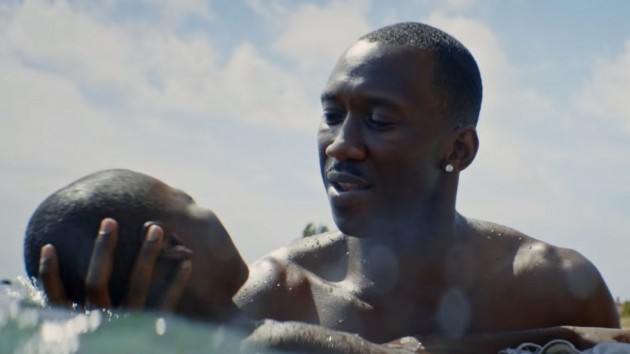
Moonlight, a film of childhood and maturity, of friendship and sexuality, of love and hate, of war and peace, was directed by Barry Jenkins, who made the impressive and promising Medicine for Melancholy (2008), about a tryst between two young Californians thinking about art and culture, wealth and politics, and the possibility of home. Moonlight, a work of angles and colors and moods and perspectives, a small film that has won great acclaim, is an interpretation by Barry Jenkins of a short theatrical play of time past and present, of fragmented memory, written by Tarell Alvin McCraney, In Moonlight Black Boys Look Blue. (McCraney, a Yale graduate and professor, is a MacArthur fellow.) The photoplay Moonlight, featuring Naomie Harris (Paula), Mahershala Ali (Juan), Janelle Monae (Teresa), Trevante Rhodes (Chiron), and Andre Holland (Kevin), presents three different periods in the first decades of the life of its lead character, Chiron, growing up in Miami, Florida, where, as elsewhere, gender and masculinity are policed. Can this single life—poor, black, queer—signify more than one boy’s growth? The temptation may be to project all one’s associations and expectations on a character who represents a caste or class of which many have heard rumors, but have had no real experience with—and because Chiron is still more object than subject that may happen here. In the 1986 Larry Duplechan book and 2014 Patrik-Ian Polk film Blackbird, a black boy is self-aware and loves literature and theatre, he has the gift of language, as he begins to explore his attraction to another boy, a film student, and have a sexual experience with a girl, a good friend; but, here, Chiron is adrift, lost, in terror. What hope is there for a solitary fatherless boy whose mother’s response to him is both concern and contempt? Moonlight has three acts, the first in which the sensitive, small Chiron (Alex R. Hibbert), nicknamed Little, is very young, in elementary school, with little guidance or understanding, until he is befriended by a sympathetic drug dealer, a tense, tough, and tender Juan (Mahershala Ali), who has a girlfriend, the nurturing Teresa (Janelle Monae); and years later in school, the slim, quick, fearful, polite Chiron (Ashton Sanders), is teased and taunted by more brutal boys; and in the last act, now a man, Chiron (Trevante Rhodes), nicknamed Black, is still quiet but he is hard, and a drug dealer, having taken up the profession of his one protector, Juan, and it looks as if Chiron has given up the ambiguity and sensitivity, the promise of an inner life, the suggestion of difference, of queerness, that alarmed almost everyone when he was younger. I do not think that I have seen ever before a better, more accurate and true, portrait of the terror of disapproval and punishment in which some boys live.
Everyone is different, but some seem more different than others. The three-part Moonlight, as directed by Barry Jenkins, photographed by James Laxton and edited by Nat Sanders and Joi McMillon, tracks aggression, fear, panic, rebellion, and capitulation, even as it recognizes the moments of beauty and bounty, of exploration and pleasure, that form the memories of youth. “Jenkins imbues Chiron with a palpable queerness in every sense, which is always clear if not identifiable to himself, those around him, and the movie’s audience,” declares journalist and filmmaker Farihan Zaman, after recounting marvelous moments of the film’s beauty and intimacy and meaning, in a two-part Film Comment article, “Song of Myself,” with Nicolas Rapold (September / October 2016). “Chiron’s feelings of isolation are so effectively communicated in part because the film fully submerges us in his perspective. This is brought to life by the film’s stylized cinematography (by James Laxton) and sound design. The camera frequently lingers on Chiron’s face, particularly at the beginning of each act,” observes Farihan Zaman. Chiron is chased by other boys, and the only boy who treats him well, Kevin, is convinced to beat Chiron. The camera—and through it the film viewer—does share the spaces and experiences of Chiron, but it is important to note that despite the rare welcome a film with a significant queer black character has received, Chiron is almost wholly silent through much of the film: we do not have—ever—a full articulation of his consciousness. Chiron never demands that we accept his interpretation of his perspective and experience. He gains the observer’s sympathy, but does he gain respect?
What exists other than pain? In the Film Comment interview with director Barry Jenkins, an admirer of Claire Denis, Sergei Eisenstein, Hou Hsiao-Hsien, Carlos Reygadas, and Wong Kar-Wai, the writer Nicolas Rapold asks, “Could you talk about working with the actors? Ashton Sanders as teenage Chiron has this inward, pained intensity. Trevante Rhodes as the adult plays a big guy that still has the little guy in him.” Barry Jenkins answers, “Exactly. And they never rehearsed together, they never saw any dailies from the other actors. I wasn’t worried about whether they all looked or sounded the same. What I was concerned about was, when the camera’s on them and they’re not speaking, how’s this person going to emote? Are they going to try to externalize their emotions, or are we going to just feel the pain beneath the surface? The iceberg theory. They’re all iceberg actors, man. Ashton would explain what his approach to the character was, from moment to moment. It’s a very intellectual approach to the performance, but then what you see on screen is very raw. It’s just a guy who’s wearing his emotions on his face, and he’s attempting to hide them all.” The good thing about such a performance and presentation is that they may encourage us to bring our own imagination and intellect to occurrences of silence and supposed invisibility; however these images and perceptions can incline us to be satisfied with our own suppositions, instead of asking others—those being observed—to declare their own analyses, expressions, interpretations: their own truths.
Are artists brave enough to go all the way with what they know? Does form express or constrain content? It may be that after all this time, after so many decades of artists and writers and filmmakers, there are still secrets to be disclosed. Film Comment’s contributor Nicolas Rapold asked Barry Jenkins, “What about the film has a sense of home for you?” The director said, “I grew up a block away from the apartment in the film. And then some of the voices, and the way people’s skin is always shiny—we told the makeup guy: no powder, we need sheen. But the main thing is the mom character, played by Naomie Harris. The playwright Tarell McCraney wrote the source material, like 40-45 pages, non-linear. It jumped back and forth in time, like halfway between the screen and the stage. And when I read it I immediately thought: this is a film. I did not know Tarell growing up, but we grew up literally a block from each other. We went to the same elementary school, and both his mom and my mom lived through that horrible crack-cocaine addiction. And there isn’t a scene with her that didn’t happen to either myself or Tarell. It’s talking about things that I’ve always wanted to talk about.” Yet, Chiron’s mother Paula (Naomie Harris) goes from civil and responsible to savagely irresponsible—and it is not clear why. Why does she risk her health and happiness and that of her son? Why does she pursue drugs as recreation, as self-medication, as obsession, as rule and ruin?
Good character only goes so far; knowledge only goes so far; love only goes so far: not far enough. Ignorance does not lead to as much destruction as pain does—but the roots of joy and pain are often mysterious. What are the wants and needs of a boy, a girl, a man, a woman? Where is the recognition of the institutions—legislatures and government agencies, and corporations and businesses, and universities, colleges, and schools, television and radio, churches, mosques, and temples, social organizations and teams—that influence the principles and practices that circumscribe the lives of citizens? People with power influence the lives of everyone else, but it is the poor—who sometimes feel guilt and shame for their own state—who are feared, despised, and hated by many in society: look at the poor, rather than question the dictates of power; a strategy of distraction, a pattern of scapegoating. Would it help Chiron and his mother Paula to know how other people have lived, and survived doubt, hostility, isolation, and pain, amid a tyranny of budgets and bills? Would they benefit from personal counseling—or from a bit of political awareness; from association with a labor union or credit union, or co-operatives and communal projects, such as gardens and markets, or a youth group? How is a boy, this boy, to make sense of the world? “The discovery of one’s sexual preference doesn’t have to be a trauma. It’s a trauma because it’s such a traumatized society,” diagnosed James Baldwin, in interview with journalist Richard Goldstein, for the article “Go the Way Your Blood Beats” (The Village Voice, June 26, 1984, republished in The Last Conversation, Melville House, 2014; page 63). Would it help Chiron to know of men such as James Baldwin and Bayard Rustin, to know of Alain Locke, Richmond Barthe, Countee Cullen, Billy Strayhorn, Cecil Taylor, Alvin Ailey, Paul Winfield, or Samuel Delany? Who is to say Chiron did not know, as he was in a school with a library? Would it make a difference if Chiron knew of Jason Collins, Lee Daniels, Frank Ocean or Kehinde Wiley? There is more radical black queer content—more desire and love, more self-assertion, more thought, in Lee Daniels’s film The Paperboy (2012), and television show Empire, (2015), than in Moonlight, which, yet, in time, may become as canonical as the films Death in Venice, and It’s Not the Homosexual Who Is Perverse, But the Society in which He Lives, and Fox and His Friends, Ernesto, My Beautiful Laundrette, Maurice, Looking for Langston, Edward II, Philadelphia, Wild Reeds, Total Eclipse, Happy Together, Before Night Falls, Far from Heaven, Kinsey, Brokeback Mountain, A Single Man, and Love is Strange. Ang Lee’s Brokeback Mountain (2005), about two (white) cowboys in love, got good reviews and made a lot of money: a western, a melodrama, it was a major film by popular acclaim; and it did (educational and emotional) work in, and for, the culture, the country. Who imagines that two black males might have an intimate relationship in which friendship and love are expressed in language and gesture, in which there is care, civility, and conscience, duty as well as desire, chores and choices, and joyous laughter and patience with tears, and an ability to balance honesty with hope: who imagines love not as infatuation, not as seduction, but as mission? Would Chiron find comfort or confidence in books such as James Baldwin’s Just Above My Head (1979), a novel of generations, of family and music, with a talented young singer who becomes involved with a music colleague then a family friend, all three being black men; or John A. Williams’s Clifford’s Blues (1999), a second world war fiction in which a jazz man is stuck in Germany and has male and female sexual partners, some of whom are forced on him, the decadence revealed beneath Nazi order; and Fragments That Remain (Steve Corbin, 1993); or the stories in Gary in Your Pocket (Gary Fisher, edited by Eve Kosofsky Sedgwick, 1996); and Sunday You Learn How to Box (Bil Wright, 2000), Vanishing Rooms (Melvin Dixon, 1991), A Visitation of Spirits (Randall Kenan, 1989), Whose Song? And Other Stories (Thomas Glave, 2000) and Yesterday Will Make You Cry (Chester Himes, 1998). Films do not show us usually what a character may be reading or thinking about, unless it is a plot point. Who imagines that friendship, love, and sex between black males might be the center of art and philosophy, community and politics? Maybe knowledge of a broader culture might have helped Chiron, possibly not. One must still contend with the burdens of one’s circumstances despite what one knows or reads—but one might do that with more confidence if one’s imagination and intellect have been cultivated, which is not to say that one will prosper.
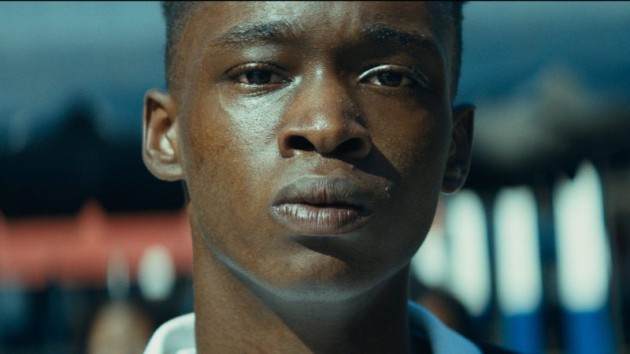
“It would be truer to the mood and spirit of this breathtaking film to say that it’s about teaching a child to swim, about cooking a meal for an old friend, about the feeling of sand on skin and the sound of waves on a darkened beach, about first kisses and lingering regrets,” wrote Anthony Oliver Scott in his October 20, 2016 New York Times article “Moonlight: Is This the Year’s Best Movie?” The film critic A. O. Scott commended the film’s luminous look given the film’s difficult character studies, their particular circumstances and transcendent resonances. “Based on the play In Moonlight Black Boys Look Blue by Tarell Alvin McCraney, Moonlight is both a disarmingly, at times almost unbearably personal film and an urgent social document, a hard look at American reality and a poem written in light, music and vivid human faces,” Scott declared. A. O. Scott registered Chiron’s fear and confusion, and the pain Chiron and his mother Paula cause each other, and the surprising refuge Chiron finds in Juan and Teresa, Juan’s girlfriend; and yet, while the boy’s life shrinks into deprivation and loss, survival and pride, and the merest possibility of love and redemption, “Moonlight dwells on the dignity, beauty and terrible vulnerability of black bodies, on the existential and physical matter of black lives.”
Moonlight looks and listens, but how much of what it presents will be understood fully? Anthony Scott states, “Though the film, like Richard Linklater’s Boyhood, is driven more by the flow of experience than the mechanics of plot, there are plenty of twists and reversals. Chiron’s friendship with a schoolmate named Kevin (who grows from Jaden Piner to Jharrel Jerome to André Holland, all excellent) evolves through a dance of camaraderie and betrayal that is better witnessed than described.” Of course, describing reality often reveals how much of it we understand. What is one to make of the fact that certain stories end where they might have begun —with friendship, desire, love, and two people deciding to face life and its difficulties together? What if Andre Holland’s Kevin and the Chiron of Trevante Rhodes had been embarking on a civil union or marriage, and the story followed their efforts to nourish love and loyalty, and to find or keep creative work, and to make a durable home in an accepting community? I suppose there would be a great deal of conflict and drama in that, as the world remains forbidding for many people. “In one way or another, one is very much a prisoner of his time,” James Baldwin told interviewer Julius Lester, “But I know what I’ve seen and what I’ve seen makes me know I have to say, I know. I won’t say I believe, because I know that we can be better than we are” (The Last Interview, Melville House, 2014; page 45). That 1984 interview occurred three years before Baldwin’s death in Saint Paul de Vence, France; and since then Baldwin has been the subject of articles, books, conferences, and films, and while there has been laudable commentary by writers such as Lawrie Balfour and A. Scott Henderson, Ed Pavlic, Nathaniel Rich, Lynn Orilla Scott, Michael Thelwell, and Magdalena J. Zaborowska, it has been dismaying to see many people who claim to admire Baldwin discuss his life and work in the narrowest terms, only paying attention to matters of race and sexuality, which seems a betrayal of his complexity. Baldwin believed in an individuality—and a privacy—that defied, or transcended, the limiting labels of society: he had a quite distinct idea of personal integrity. Can we comprehend and speak of such complexity? Will we ever learn? Will wisdom create a new language?
Moonlight is like Pather Panchali in its focus on a young boy, Apu, living in wilderness, for Moonlight’s Chiron a wilderness of personal impulses and public violence, a boy beginning to be aware of the world, a place of castes and categories; and Moonlight resembles Lord of the Flies in showing children as brutal, carnivorous, and exploitive, and only rarely caring and communal, as the children are communal in Sugar Cane Alley; and Moonlight is like Sounder and The Lesser Blessed in that a boy is helped by a benevolent stranger who prepares a table of welcome for him; and Chiron has affections and desires that are disrespected, making him vulnerable to others, as does the excellent male student in La Mission, a student who chooses higher education and independence; and Chiron shares with the young woman in Winter’s Bone the need to survive deprivations and hostilities that are neither explained or understood, but where nature is resource (food) in Winter’s Bone, it is refreshment (swimming) in Moonlight; and the selfish, spoiled girl in Margaret —with an intelligence at once questing and blind that neglects the feelings and perspectives of others, privileged, judgmental—embodying much of what makes a life like Chiron’s difficult; and Wadjda’s determined young lead character faces opposition and restrictions in a hierarchal society in which protections are shadowed by threats of punishment—but the love she gets from her mother helps to keep her strong, the kind of love Chiron misses; whereas the awakening girl in Diary of a Teenage Girl may share with Chiron an inclination toward a forbidden erotic life, hers with an older man, she does not face the same punishment, having more privacy and privilege; and Me and Earl and the Dying Girl is a rare view of interracial friendship and creativity, of affection beyond the barriers of class, race, or gender—what Chiron might come to hope for; and Moonlight is like Boyhood in not being afraid of the quotidian as it offers chapters in a boy’s developing life, reaching manhood.
Moonlight screened at film festivals, first at Telluride September 2, 2016, before opening for the general public. “Its story of aching loneliness, sexual longing and the despair of blasted lives, the emphasis it puts on the great difficulty and the equally powerful necessity of intimate human connection, the way it persuasively insists on the shared humanity of marginalized communities, makes it feel like a film we’ve been waiting for for a very long time,” concluded Los Angeles Times film critic Kenneth Turan, after recounting the film’s strength of craft (October 20, 2016). “Now that it’s arriving in theaters throughout the rest of the country, viewers can finally see what all the fuss is about. And they will see a perfect film, one that exemplifies not only the formal and aesthetic capabilities of a medium at its most visually rich, but a capacity for empathy and compassion that reminds audiences of one of the chief reasons why we go to movies: to be moved, opened up and maybe permanently changed,” wrote Ann Hornaday in The Washington Post (October 27, 2016). “Intimacy in its many forms—not just sexuality—is Jenkins’ subject here. There is the relationship of shore to sand, Moonlight to tides, city to watery expanse. There are the small-town interconnections a housing project brings,” observed Lisa Kennedy (The Denver Post, November 4, 2016). “The emphasis in this movie is not placed on the problems of the characters. It’s placed on the humanity of the characters,” Wesley Morris had said in the online pages of the New York Times (November 3, 2016). Yet, Armond White, responding to the public appreciation of the film since its festival appearances, wrote a possible corrective for The National Review: “Pity has made Moonlight the liberal cause for this movie season. Critics, festival programmers, and filmgoers who don’t usually bother with movies about blacks or gays have rallied in unanimous praise for this film that makes them feel not only sorry for blacks and gays but better about themselves. Their self-righteous ‘diversity’ keeps to the surface of black and gay experience” (October 22, 2016). His corrective may be one that lasts.
Boyhood, a film of family and childhood with much of their mundane detail, features Ethan Hawke and Patricia Arquette as the parents, Mason Sr. and Olivia, and, as their children, the writer-director Richard Linklater’s daughter Lorelei as Samantha and Ellar Coltrane as son Mason Jr. The motion picture was photographed on celluloid over a period of twelve years, usually for only a few days a year, ending in 2013; and the photoplay, financed by IFC Films, was shot by Lee Daniel and Shane Kelly, and edited by Sandra Adair. The cherubic boy Ellar becomes the slim sultry young man Mason before our eyes. Boyhood is a unique accomplishment from Richard Linklater, the Texas filmmaker who has been making works that capture American daily life and its casually eccentric people for decades. Linklater seems concerned with people and their pragmatism, as do filmmakers David Gordon Green and Jeff Nichols, as well as, before them all, Charles Burnett. There is more truth and less fantasy in Richard Linklater’s films than in most. “Richard Linklater has done in a film that can be plain on a moment-to-moment basis but is something quite special in its entirety,” wrote film reviewer Todd McCarthy, after having screened Boyhood at the Sundance festival, speculating that although it was a special work it might have difficulty finding an audience (McCarthy’s Hollywood Reporter commentary was posted online January 20, 2014, following the film’s premiere). The family in the film fractures, and each parent rebuilds a separate life, with the mother learning that she—not a replacement father—must be the foundation of her daughter and son’s lives; and the children find their own friends and interests and goals. The father is less of a figure of authority than the mother but he encourages his children’s curiosity and honesty. Aspects of the changing national popular culture and politics can be seen in all their lives, too. “Still, there is little doubt that, over time, Boyhood will be seen and deeply appreciated by viewers young and old on various formats and in different ways, with the end result that it will endure,” surmised McCarthy. Perhaps, part of what determines whether a film is major or minor is the perception we bring to it, what we find in it, the questions we ask of it and the answers we accept.

“What makes Boyhood so remarkable, though, is that Linklater actually shot the film in short annual increments across 12 years, so that we witness not just the arc of a story but the actual physical and emotional transformations of the characters—and the actors—as they grow and age. Accordion-like, the film collapses those 12 years into just under three hours. The effect is stunning,” said Film Comment’s Holly Willis (the article “It’s About Time,” July / August 2014), comparing the film to the work of Francois Truffaut, Gus Van Sant, and Larry Clark. Samantha and Mason grow up, but so do their parents. “Their mother endures a series of bad partners while trying to build a career and take care of her family. And their father drifts in and out of their lives, a goofy boy in a grown man’s body who refuses to acquiesce to adulthood and its responsibilities, until he capitulates two-thirds of the way through the story, trading in his prized GTO for a minivan to appease a new wife and baby,” notes Holly Willis, before declaring, “Anyone familiar with the director’s increasingly sophisticated body of work knows that time is a recurring theme.” (Willis recalls the Before Sunrise trilogy, with its focus on the couple Jesse and Celine, and its sustained dialogue, foreign landscapes, and long takes—with stories picked up after the absence of years.) Time comes and goes through the routine and rituals of life. What does the film offer to someone who seeks cinema for enlightenment or entertainment, for something other than ordinary life?
In Film Comment, Holly Willis states, “Hawke has described Boyhood as an example of ‘human time-lapse photography,’ and in so doing, he identifies the film’s essential feat: it returns cinema to its original mandate, to reflect reality as it occurs in time in a sequence of images. This is an important point.” Was that cinema’s original mandate? Or cinema’s only mandate? Certainly, the imagination had and has a role—and is why so many of the early films were epics and romances, dazzling, thrilling stories, and why films of magical events, featuring special effects, remain popular. Certainly, many directors have created grand narratives in cinema: among them, Robert Altman, Richard Attenborough, Warren Beatty, Bernardo Bertolucci, Kathryn Bigelow, Luis Bunuel, Youssef Chahine, Francis Ford Coppola, Julie Dash, Sergei Eisenstein, John Ford, Abel Gance, Haile Gerima, D.W. Griffith, Peter Jackson, Akira Kurosawa, David Lean, Terrence Malick, Steve McQueen, Christopher Nolan, Nate Parker, Jean Renoir, Martin Scorsese, Steven Spielberg, the Wachowski siblings and Orson Welles. Much of the history of the world—and many of the dreams and fantasies of men, women, and children—can be found in the motion pictures of such directors. “Linklater, however, renews our expectation of cinema as a realm of wonder—but not by advancing its techniques or reveling in its increasing capacity to reshape reality in its portrayals. Just as the goal of time-lapse photography is to present normally imperceptible phenomena for scrutiny—flowers blossoming, clouds tumbling across the sky, and so on—he finds a way to give us the lives and bodies of his characters, who grow and change against the backdrop of the world and its events,” claims Holly Willis. That is, no doubt, important, but it is important partly because of what it exists in contrasts to—which is to say that if all that existed were Richard Linklater films, they would not be enough. We need opposites, or what appear to be opposites: fact and fiction, nature and technology, tradition and experiment, thought and feeling. The future, like the past and the present, must remain real for us: such a conception of human existence is key to hope, morality, and wisdom.
Of course, Boyhood, the work of a director in collaboration with his actors and crew, is both fact and fiction. The film critic Justin Chang wrote about the film production, which began in 2002, for a report in Variety featuring an interview with Linklater (“Richard Linklater on Boyhood…,” June 25, 2014). “While the shoot progressed in three- or four-day increments over the next dozen years, the annual process of brainstorming took months, during which time the actors participated in Linklater’s writing process, filling in his broad narrative outlines with their own dialogue and personal experiences of childhood (and, for Hawke and Arquette, parenthood).” It is a fascinating but, for Linklater, typical process in terms of being open to life, to others. “I was aiming for reality. I never wanted it to feel written, but it was,” Linklater told Chang, as they spoke in Linklater’s Austin Film Society offices. “I was always just taking the temperature of these four people where they were at, and where they were going. It was an ongoing collaboration. But the biggest collaborator here, looking back, was time.”
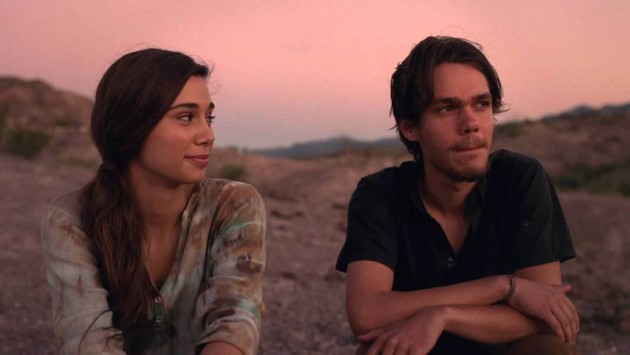
(In writing about Richard Linklater, Justin Chang cites Jacques Rivette, Eric Rohmer, and Francois Truffaut. Who, seeing Slacker in 1991, would have imagined that company? Variety’s Chang acknowledges that, “To the uninitiated, those might sound like lofty reference points to attach to Linklater, a laid-back Austin native who goes by Rick and punctuates every other sentence with ‘yeah’ or ‘you know’; and who, during our interview, sometimes himself resembles an overgrown kid with his T-shirt, shorts and unruly mop of hair. But no one familiar with the filmmaker’s work would be surprised by his penchant for odd philosophical digressions or his aw-shucks erudition. It’s the same stealth intelligence at work in his movies, which often conceal an unusual narrative and formal ambition beneath their shaggy, unpretentious charms — a subversive streak that has set Linklater apart from some of his more bottom-line-oriented contemporaries.”)
Most people warm at the sight of little children, and their heart aches at their needless pain. Charles Dickens made the pleasure, pain, and pride of children a large aspect of his work. Filmmakers have done the same, although there is often a difference between motion pictures that pander and those that probe; and there seems little doubt that La Mission, Margaret, The Lesser Blessed, Wadjda, Boyhood and Moonlight are the kinds of films that attempt depth. Some films at first may seem minor, but, with time and thought, they begin to grow in the mind, to grow in the life of the culture—and that, already, seems true of Boyhood and Moonlight. Writing in the September / October 2016 Film Comment, Farihan Zaman commented on the rarity of the sublime images that Moonlight offers to people of color—and, of course, simultaneously, to the larger world. Three questions, then, which may distinguish major work from minor: How excellent, how exceptional, are the craft and content? What does the art reveal of human experience? How much of the organized world does the art and artist help us to understand? There are as many ways of being an artist as there are artists—and as many different kinds of arts as artists desire. There are as many ways of being human as there are people on the planet. The struggle for freedom and justice is eternal and everywhere. (Essay submitted August, 2017)


